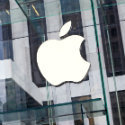
Based on several new data points, it appears Apple has cracked the code in pricing when it comes to selling smartphones in the US market.
And what the company has learned could have significant implications for the 5G market in the coming months.
Evidence of Apple's efforts come in part from its performance in the fourth quarter of 2019. It was the first period that included sales of Apple's newest iPhones: the iPhone 11, iPhone 11 Pro and iPhone 11 Pro Max. It was a blockbuster quarter for the vendor – the analysts at Wall Street research firm Jefferies estimated Apple sold 71.3 million iPhones during the period, 6% above Wall Street's expectation of around 67 million.
Indeed, according to analyst Cliff Maldonado of BayStreet Research, Apple's success in the fourth quarter of last year helped raise the overall US wireless sector. During the period – the critical holiday shopping quarter – he said US wireless network operators recorded growth in Q4 postpaid customer additions for the first time in five years.
He attributed that growth to one big factor: The iPhone 11 starts at just $700. "By giving its value flagship the full-featured iPhone 11 name, Apple brought the mass-market the latest iPhone at a price closer to $500 than $1,000," Maldonado wrote in a recent BayStreet note to clients.
Those findings dovetail with a recent report from the analysts at research and consulting firm Omdia (which is owned by the same parent company as Light Reading). Omdia last month announced that the iPhone XR was the world's most popular smartphone in 2019, easily out-shipping all other models. Apple introduced the iPhone XR in the fall of 2018 for around $750 – the new $700 iPhone 11 is the clear successor to that phone.
Finding the ceiling
What this all could indicate is that the smartphone market may well have a ceiling when it comes to price. Over the past five years or so, price tags for top-of-the-line smartphones have been inching into $1,000 territory. That's well above the $200 Americans used to pay when smartphones were subsidized by their carrier and paired with a two-year service contract.
Nowadays, most operators sell smartphones at full price, and ease the sting of that cost via no-interest payment plans that can last up to three years for customers paying off expensive phones.
Those eye-watering prices have pushed a growing number of smartphone owners to hang on to their existing phone rather than upgrading to a new one.
At least, many were doing that until they decided to buy the new iPhone 11 at $700.
"We now believe the lower price on the iPhone 11 helped a more significant portion of Apple's elongated iPhone 6S/7 base to justify upgrading," wrote BayStreet's Maldonado.
5G pricing
These data points have implications for the 5G sector. So far, virtually all of the market's early 5G phones cost $1,000 or more. For carriers hoping to entice customers onto their new 5G networks – and to potentially make more money from 5G pricing plans – this situation isn't ideal.
Prices for 5G phones will undoubtedly fall in the months and years to come. Already Coolpad has announced its intention to release a $400 5G smartphone, and a top Verizon executive recently hinted at $600 5G phones by the end of this year.
But Samsung – the world's second-largest smartphone vendor in the fourth quarter of 2019, according to research firm IDC – is not yet among the vendors working to cut down price tags for 5G smartphones. The company's new Galaxy S20, Galaxy S20+ and Galaxy S20 Ultra are all above $1,000.
This strategy, explained Maldonado, may not play well.
"By not addressing the 'value flagship' category and the surging $700 iPhone 11, Samsung could create an opportunity for other Android OEMs or drive increased switching to iOS from legacy Samsung users unwilling to pay $1,000+ for a flagship," he wrote. "With broad 5G network coverage far from certain in the 1H20, we believe Samsung could end up dependent on carrier promotions" to bring Samsung's new phones to a wider market.
Quandaries in Cupertino
Cupertino, California-based Apple now has a decision to make. It is widely expected to release a 5G iPhone this fall, which many expect to be a catalyst for the 5G sector in general.
"The pending 5G cycle is still the biggest catalyst for Apple moving forward in our view," wrote the analysts with Jefferies in a recent note to investors, noting they now expect Apple to sell 211 million iPhones in its next fiscal year, which is above Wall Street's consensus of 200 million. "We expect the 5G cycle to bring significant upgrade activity driven by: 1) the aging installed base of iPhones coming up for refresh; 2) a big industry marketing push behind 5G; 3) more significant 5G product differentiation versus prior cycles; 4) higher worldwide smartphone penetration; and 5) wireless carriers incentivizing upgrades to get better leverage out of their network investments."
But how exactly will Apple push 5G into its iPhone portfolio? Will it squeeze the technology into the existing pricing scheme that helped it record such impressive growth during the fourth quarter of 2019, or will it restrict 5G to its more expensive iPhone Pro Max models? Or is 5G something that should cost extra, like how LTE-capable Apple iPads cost more than their WiFi brethren?
The decisions the smartphone vendor makes in 5G could set the tone in the space for years, if history is any indication.
Apple isn't the only swing factor that will affect the 5G sector, considering service providers including AT&T and Verizon have argued that the enterprise opportunity for 5G might eventually be equal to or larger than the consumer opportunity. However, there's no doubt that the entire 5G industry will be carefully watching Apple's expected iPhone unveiling in September.
— Mike Dano, Editorial Director, 5G & Mobile Strategies, Light Reading | @mikeddano
About the Author(s)
You May Also Like











